
Need to know when your house was built? Here’s a guide on how to find out your home’s build date.
If you're thinking about relocating to a major city, read this before selling your home


Moving into a new home may sound more like a dream than reality to many Americans. With the total cost of buying a new home reaching $944,320—an all-time high—this is the least affordable time to buy a home in 30 years.
Higher home costs and interest rates leave many homeowners no choice but to stay in their current house and renovate. To prospective home buyers who can’t afford newer homes, the cost of renovating a fixer-upper is a more realistic option.
If home buyers can’t find or afford homes where they live, is moving to a new city the best alternative? In this study, we seek to answer this question. Read on to discover which cities in the U.S. have the worst housing shortage and how homeowners can think ahead.
To determine the cities with the worst housing shortages, we began by analyzing the top 25 U.S. metropolitan areas with the lowest net migration (immigration vs. emigration) for affordable housing, according to Freddie Mac. We also considered each city’s population to compare net migrations per capita.
Next, we reviewed the new listing percentage of these cities based on their current housing supply. From there, using the Federal Housing Finance Agency House Price Index (FHFA HPI®), we calculated the average home price percentage change from Q4 2021 to Q1 2022. This gave us a sense of each city’s expected growth rates.
Finally, after comparing the percentage of population to affordable housing available and factoring in the above data, we were able to rank the top 10 metro cities in the U.S.

Let’s dive into each city individually for a closer look.
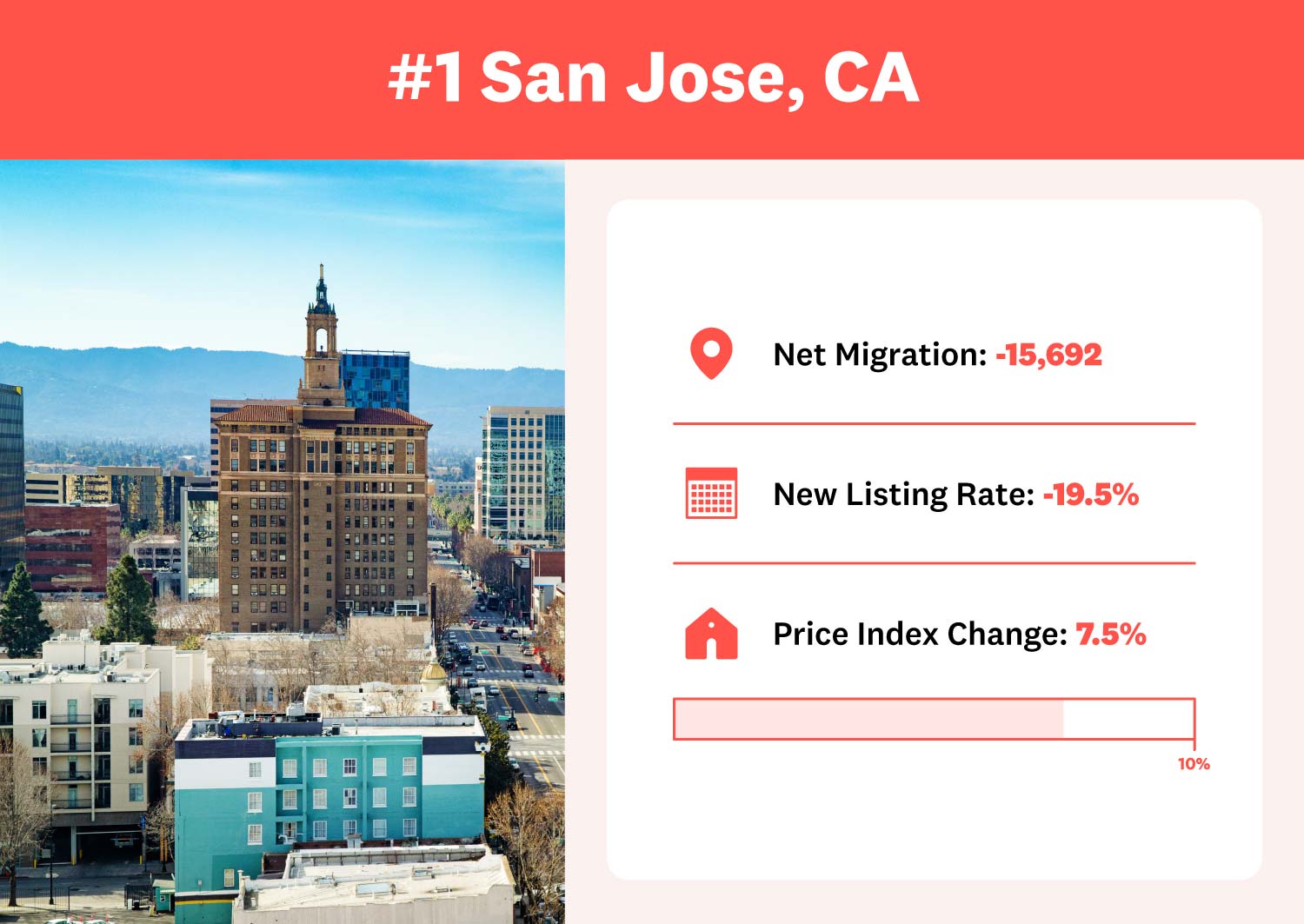
Located in the heart of Silicon Valley, San Jose is one of the wealthiest cities in the U.S. As home to over 1 million residents—not to mention the headquarters of Tesla, Apple, and Google—how is it number one on the list for housing shortages?
Despite being a major technology hub, its plethora of job opportunities are polar opposite to available houses on the market. With nearly 20% less homes listed this year than the last, San Jose experienced the highest drop in housing supply from last year.
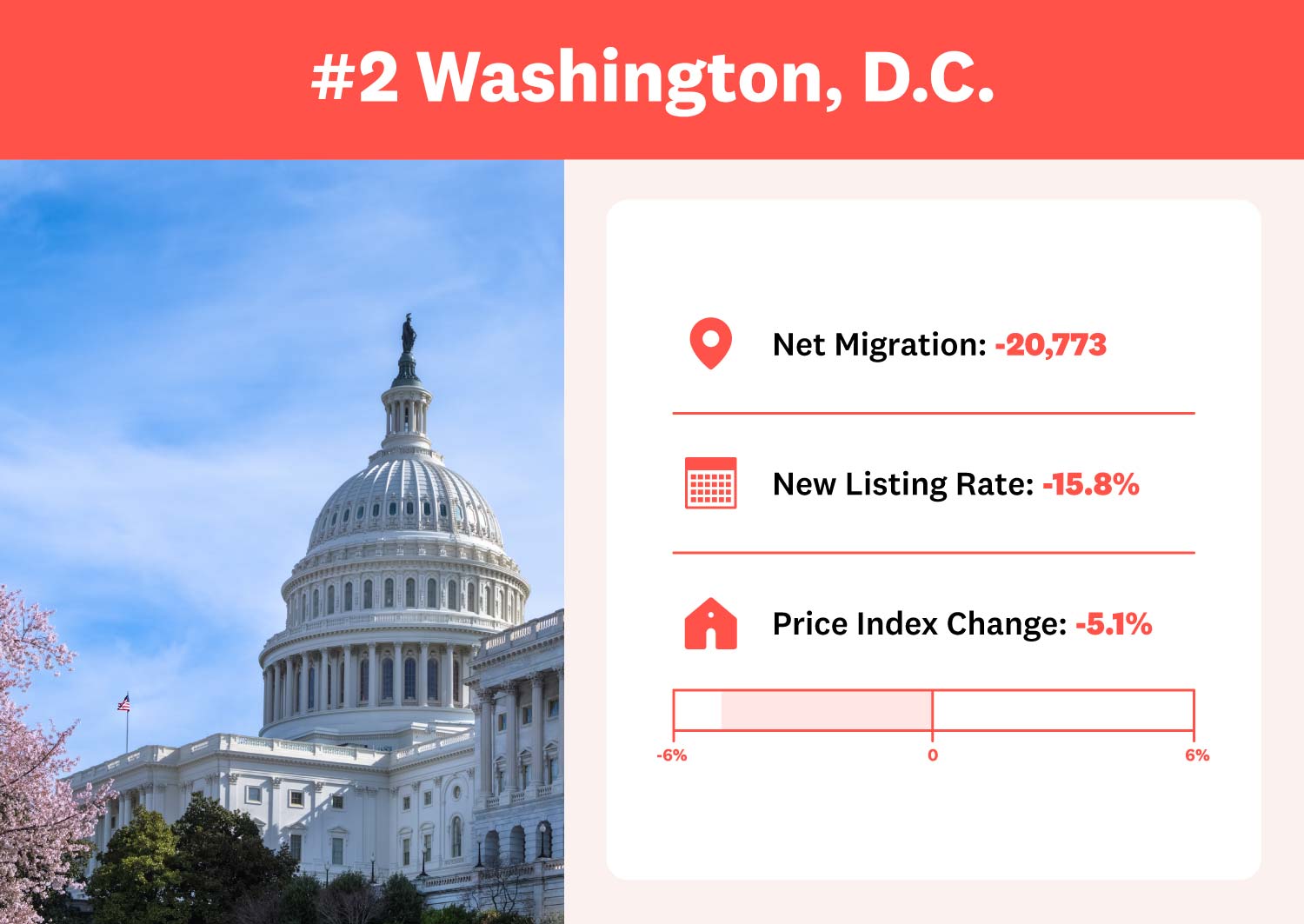
Surprisingly, America’s capital city ranks second on the list. With a population of about 657,000, and over 20,000 residents moving out in search of affordable housing, Washington, D.C. has the worst net migration of all cities.
Along with this negative net per capita, new listings in D.C. also declined by almost 16% from last year. As a result, new residents are competing over fewer housing options.

The Bay Area may be the headquarters of many Fortune 500 companies, like Lyft and Twitter, but it’s not reason enough for many homeowners to stay. In addition to a negative listing rate, home prices increased over 6% last year.
Pricier homes and fewer citizens have been taxing for San Francisco realtors. According to a report by RE/MAX real estate company, San Francisco is one of the top five cities to experience the biggest decrease in home sales this past year.

Home of the Red Sox and nations’ oldest marathon, Boston is a city rich in history and culture. That said, its home prices are steadily increasing and dissuading homeowners to stay. With a population of around 693,000, the city’s net migration is well over negative 2,000 per capita.
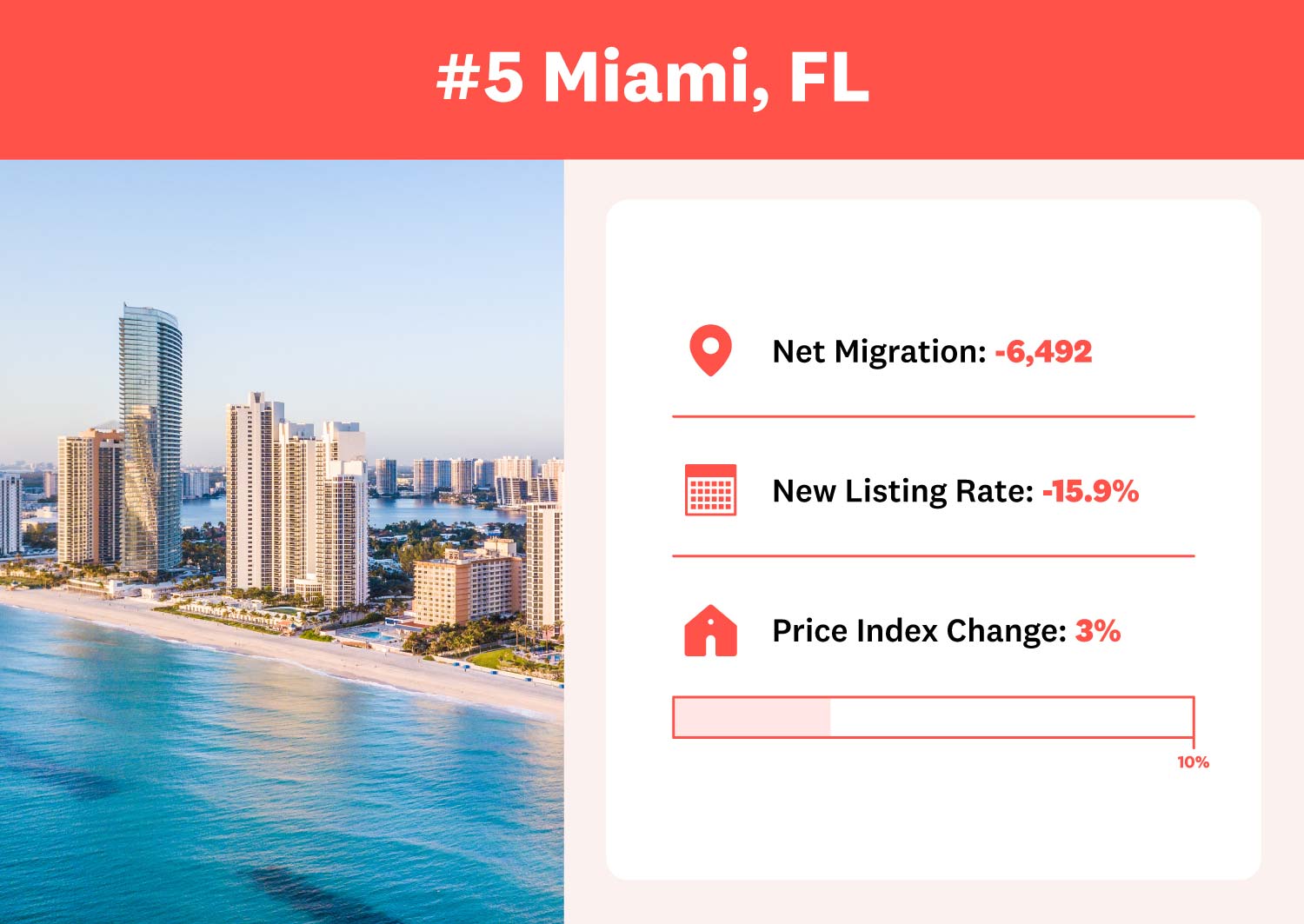
Warm weather and palm trees might be the only perks of living in Miami, based on its current market state. The aforementioned RE/MAX report also listed Miami as another major city experiencing the biggest decrease in house sales.
Additionally, a report by Florida International University (FIU) found that nearly a third of homeowners in Greater Miami spend over 35% of their monthly income on housing. With Florida being the second most expensive state for home maintenance, becoming a new homeowner there has its challenges.
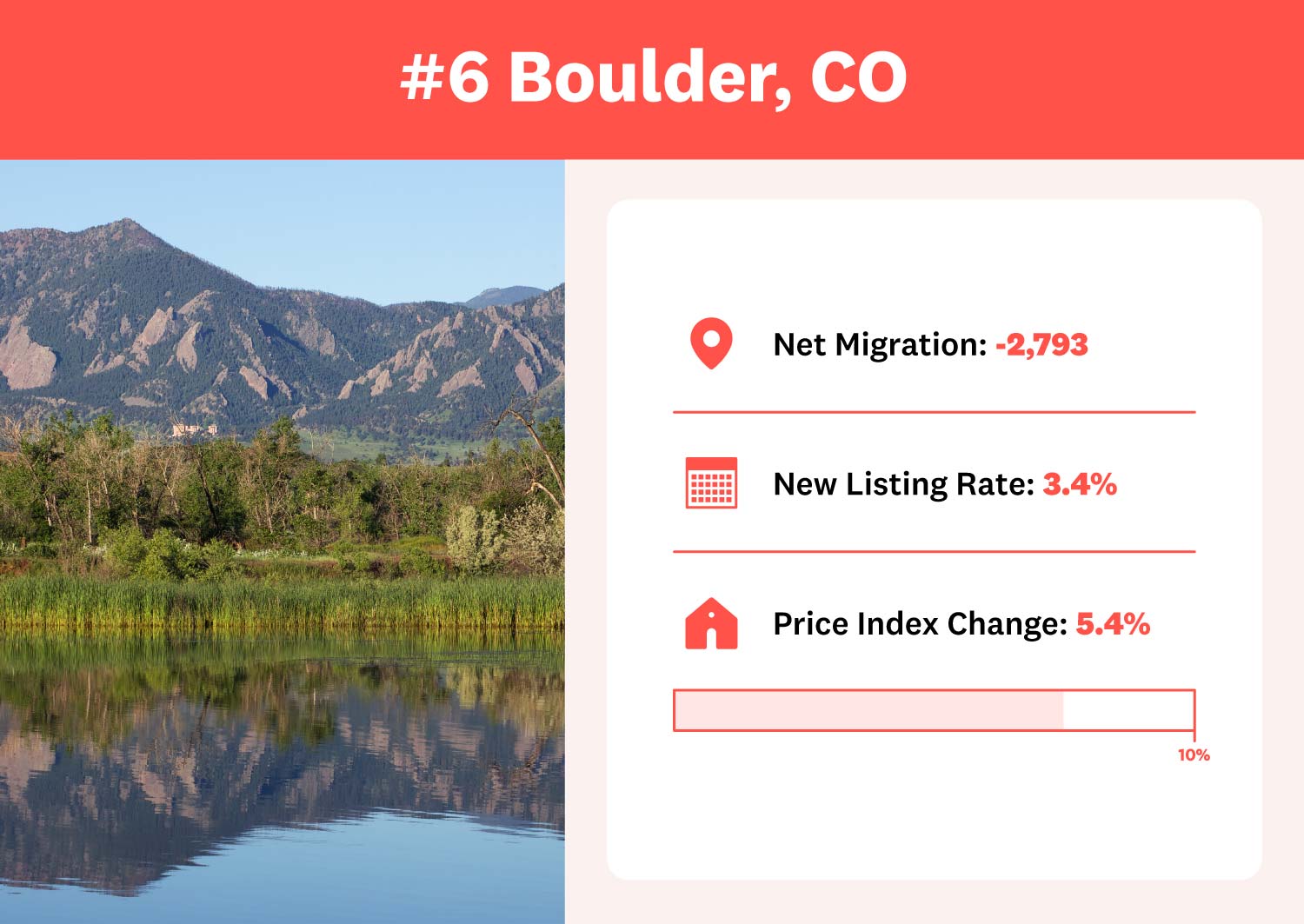
From dozens of parks to miles of hiking trails, Boulder is definitely a city for the adventurous soul. The U.S. News & World Report ranks this mountainous city number four on its 2022 report of Best Places to Live due to a high quality of life and strong job market.
With prices climbing over 5% this year over last, this type of recognition is possibly correlated to the city’s soaring home values. U.S. News simultaneously lists Boulder in its Top 25 Most Expensive Places to Live.
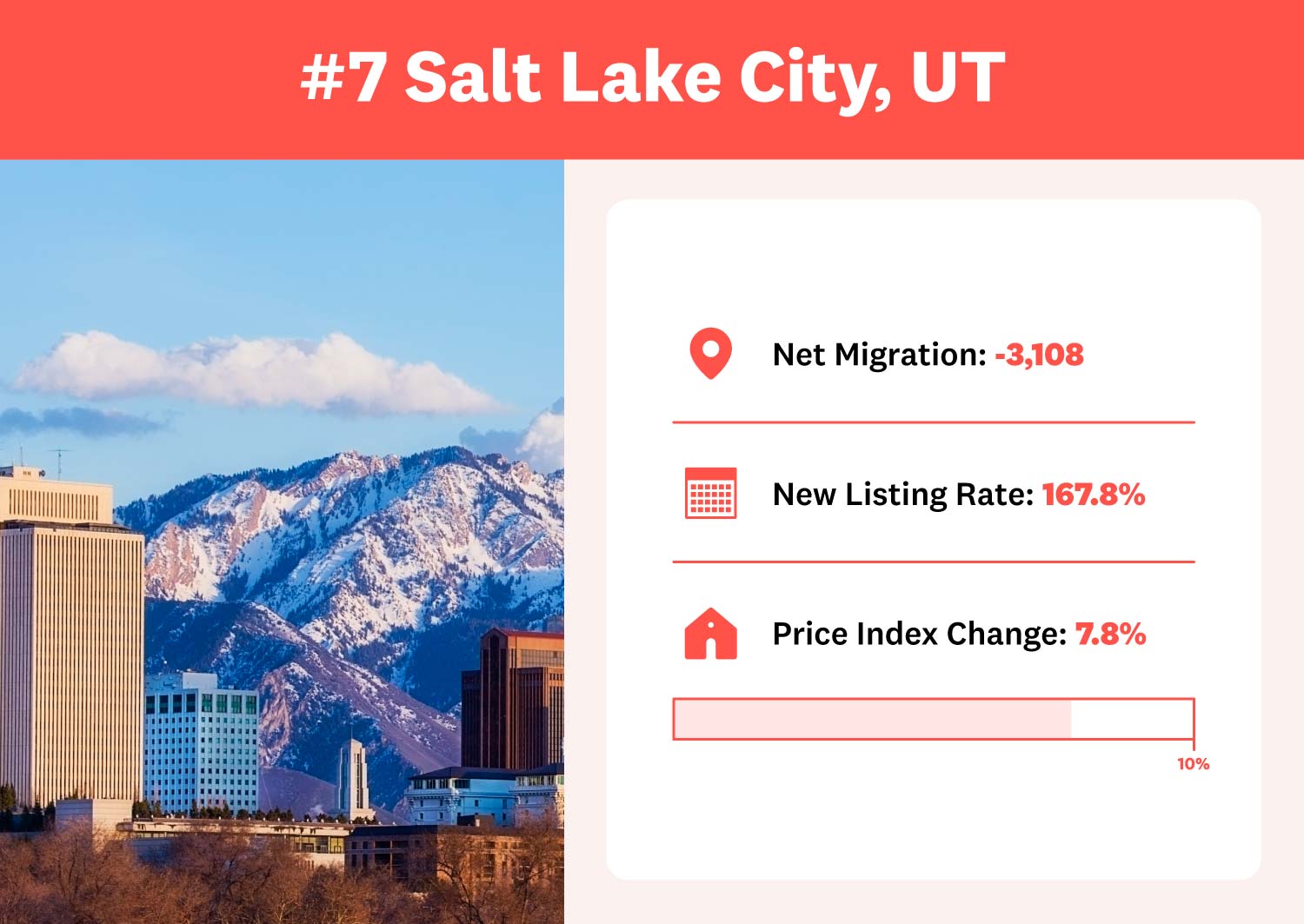
Boasting an extremely high listing rate of new homes, it makes sense to question a Salt Lake City housing shortage. However, after taking a closer look at the house prices, you’ll notice that it has one of the highest percentage changes. With a negative 3,108 net migration, perhaps this is why more homeowners are leaving the city than coming.
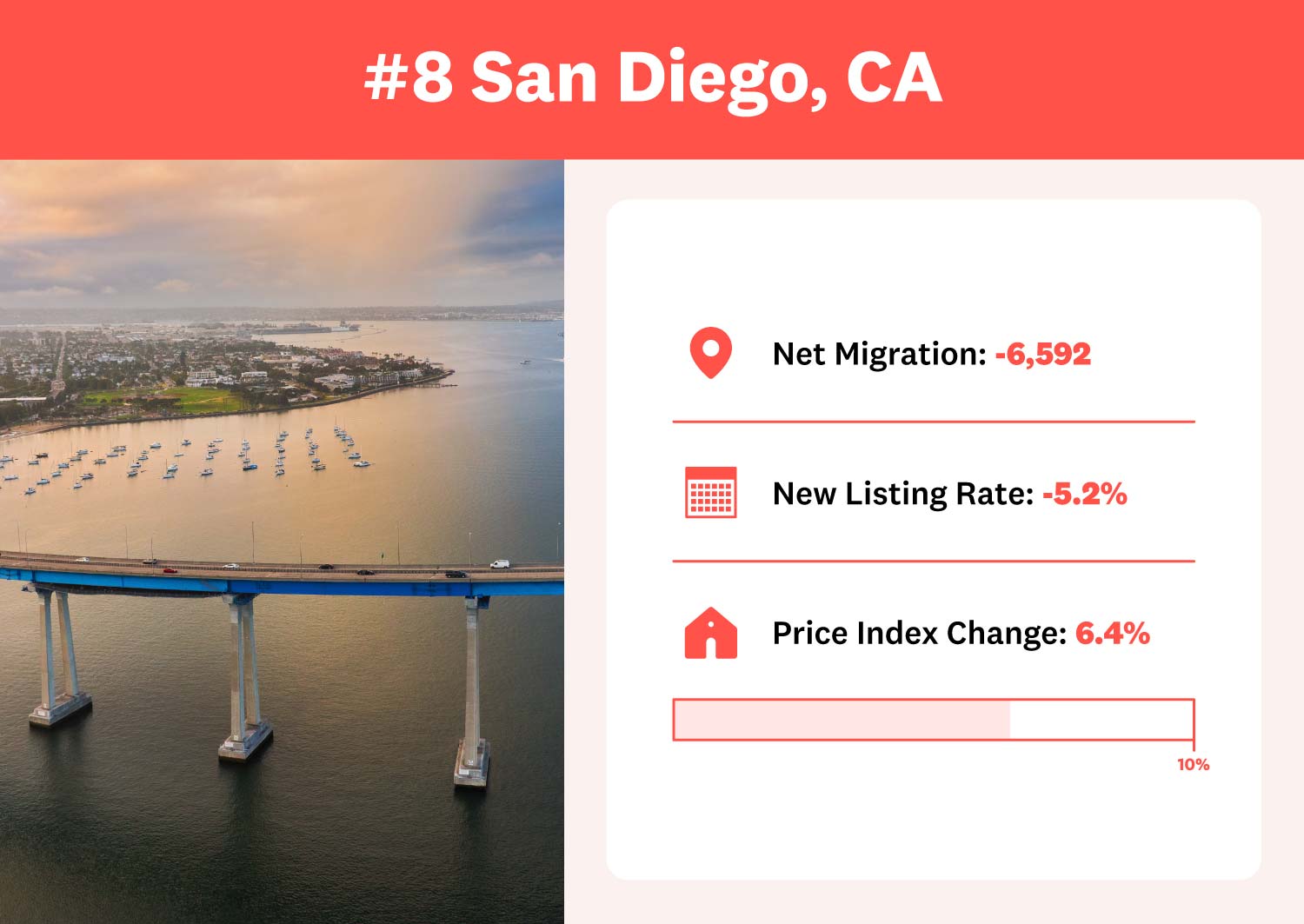
Pristine beaches and dog-friendly restaurants seemingly aren’t enough to attract new homeowners to San Diego. With surging home prices, not to mention a 23% decrease in luxury home sales, it makes sense that San Diegans are trying to escape its unaffordable housing market.
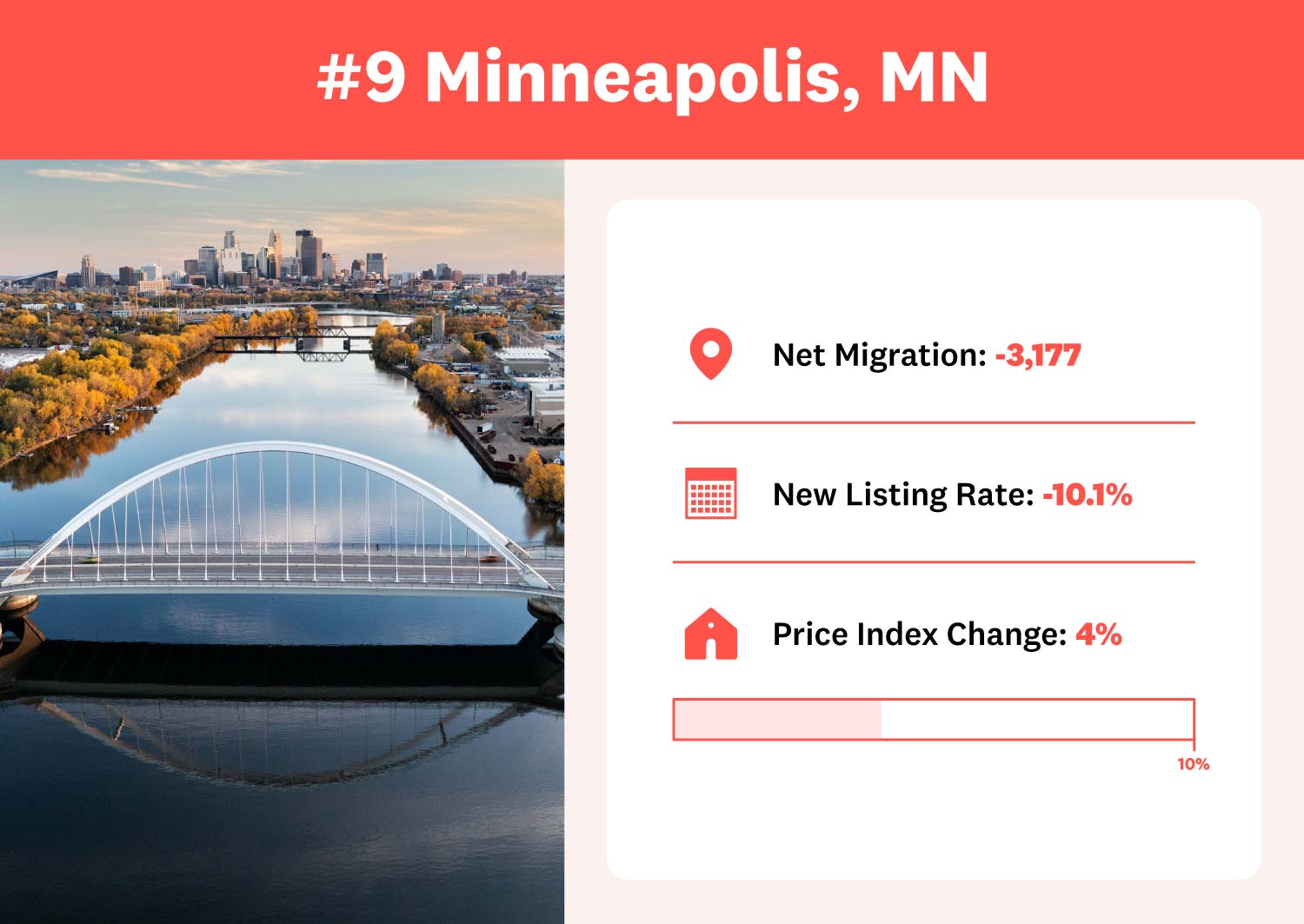
Known as the City of Lakes, living alongside scenic blue shores are quite a sight for Minneapolis newcomers. The home vacancy rates, however, are equally noticeable. This, coupled with increasing home prices in the Twin City area, homeowners may want to consider the potential return on investment of remodeling instead.
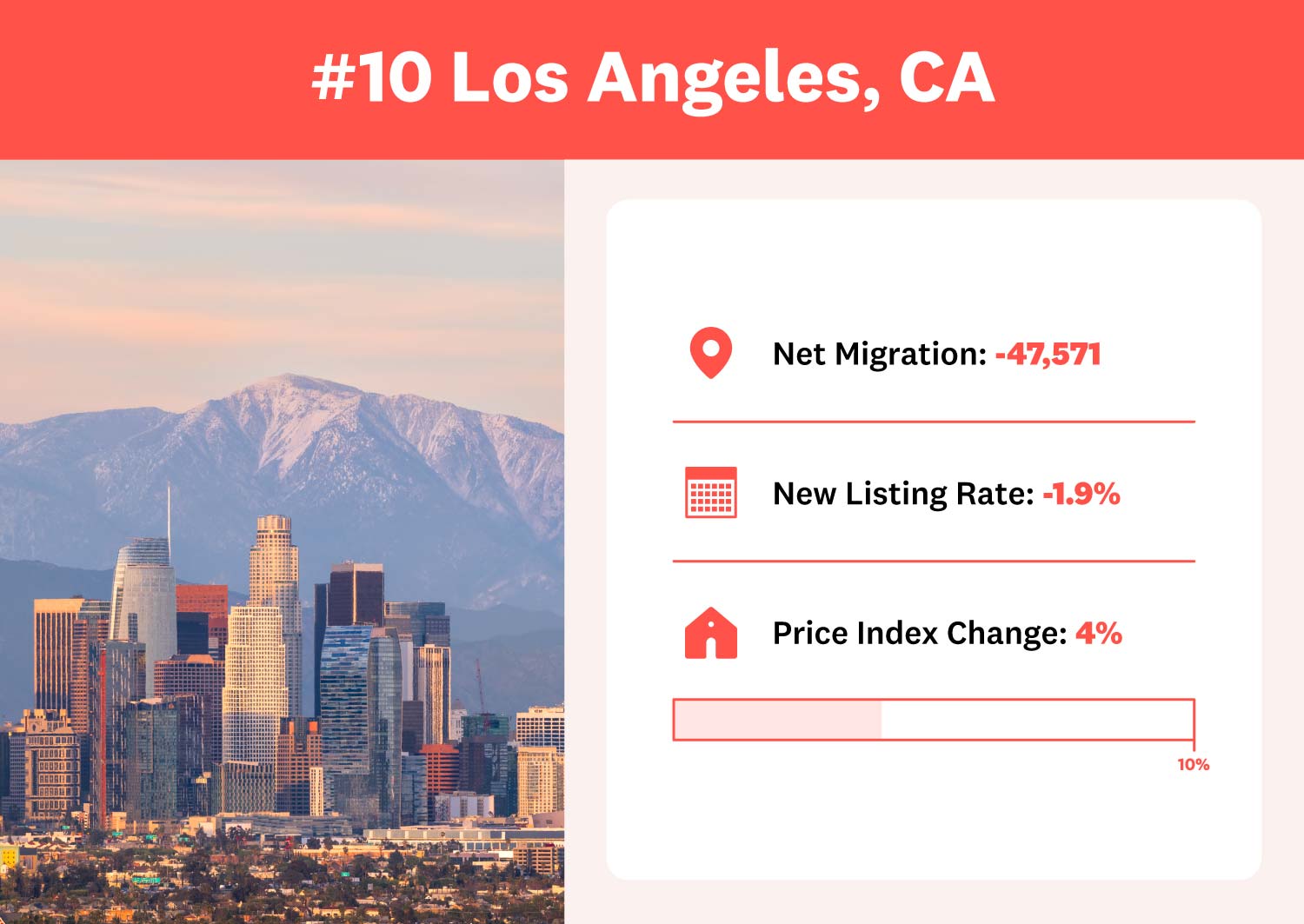
Los Angeles is usually where people flock for their shot at fame. However, according to the the U.S. Census Bureau, outmigration in the city has been among the top three in the nation for two consecutive years. From rising home prices to work-from-home options, more citizens are looking outside of the City of Angels to live comfortably.

Though escalating home costs play a significant role, they aren’t the only culprits. The ever-changing state of the pandemic also had lasting effects on the economy, including major building material shortages.
Since construction demands didn’t stop during COVID-19, cities across the nation experienced production slowdowns and lengthy back orders. With a shortage of supplies and labor, not to mention increased costs of major materials like lumber and steel, local contractors and manufacturers are also feeling the heat.
Simply put, what is available isn’t affordable, and those who opt for home improvement projects may have to wait twice as long as expected. Fortunately, production slowdowns aren’t as rough as they were in the peak of the pandemic, and planning ahead can help homeowners stick to their renovation budget.
More surprisingly, an intense market and rising construction costs also led to a multifamily housing trend, a more affordable, available option. If home renovation is the best choice for you now, a garage or basement remodel into an apartment may be an attractive investment.
To discover the cities with the worst housing shortage in the U.S., we compared the top 25 metro cities with negative net migration from Freddie Mac data, ranging from March 2020 to February 2022. We then rated each city using a weighted scale of the following factors:
Negative net migration per capita: 50 points
New listing rate of available housing: 30 points
House price index (HPI) percentage change: 20 points
We calculated the net migration per capita based on each city’s population. We also analyzed each city’s new listing rate based on Realtor.com data, and calculated their respective HPI change from Q4 2021 to Q1 2022 using the FHFA calculator.
From average costs to expert advice, get all the answers you need to get your job done.